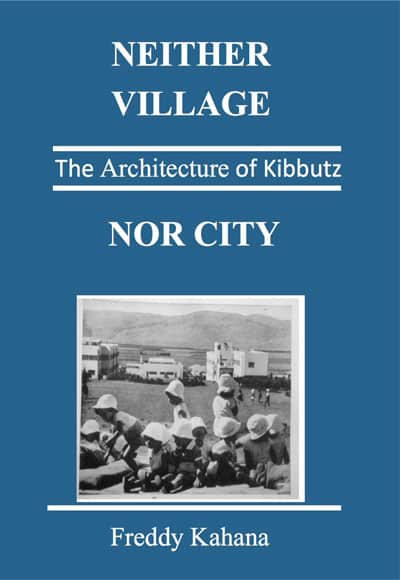
Present day communes, including the Kibbutz, are at times referred to as "Utopian" in the sense that they represent the endeavor to create an alternative to the existing and flawed "world order". As such they have become the subject of extensive study and the overall concept has even created a number of world organization through which they are researched and debated at international seminars.
A review of the many subjects and aspects of "communes" and their various connections to "Utopia" indeed reveals the wide range of interests which the subject arouses: political, economic, social, cultural, educational even artistic and poetic…little however has been mentioned of another possible focus of Utopia: as the potential replacement of the ubiquitous dystopia "Metropolis" as the flawed "world order".
Of all the many and varied physical accounts of utopian scenarios, very few, if any, envisage an "Urban – Megalopolitan" reality as the ultimate solution; the preferred venue is arcadian, ex-urban, relatively small, close to nature… and as such can be regarded as the paradigm of future man's ideal state. The commune is thus a harbinger of "The Urban Alternative" whether as a discrete rural community or an in-urban association: both basically reject the alienation of the amorphous city conglomerate in favour of togetherness, solidarity and participatory management of their immediate environment. In their rejection of the "world order", they tend to isolation and insularity; preferring local social action and avoiding converting others through political involvement on a wider scale. As the only propagators of a future Utopia in today's global reality, the commune clearly re-defines the new Utopia as a future alternative to the present ubiquitous capitalist city state and according to this definition demands the revolutionary drafting of its social and physical content.
The kibbutz movement still sees itself as deeply involved in the world's commune phenomenon which, in turn, still sees the kibbutz as one of its most developed branches; this relationship however needs closer investigation; there is a clear distinction between the "commune" and the "kibbutz" which, through its size and development, has, by definition as "neither village nor city", created itself as an "Urban Alternative". It was this "spatial" aspect, made potentially relevant through its size, solidarity, political involvement and geographic dispersal, which gave the Israeli ex-urban space its uniqueness before the basic kibbutz structure changed and diluted itself into a pseudo suburb.
"The Architecture of the Kibbutz" relates to this unique spatial alternative from a holistic view: the Kibbutz in all stages of its development, from "micro-utopian" commune to its physical configuration as a autonomous-autarkic complex arising out of its basic social, economic and educational structure and its later stages as a potential macro-utopian [1] regional entity, envisioning a real alternative to the capitalist metropolis.
To read more about the book download the full preview below

כתובתנו: היסמין 1 רמת אפעל (רמת גן)
דוא"ל: yadtabmaz@gmail.com
טלפון : 03-534-4458
פקס : 03-534-6376
קישור לוויז : להוראות נסיעה